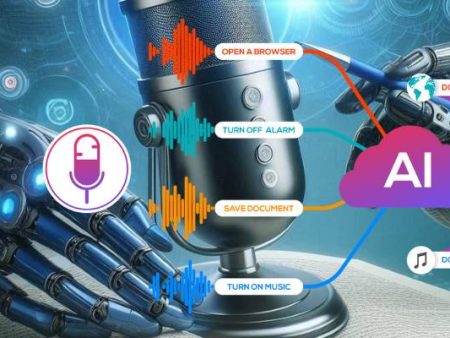Here’s a confession: I’ve underestimated meta descriptions before. They felt like a technical afterthought—just a short blurb squeezed under the title in Google search results.
But the longer I’ve been in SEO, the more I’ve realized that these snippets hold enormous power.
Think about it: you’ve got less than 160 characters to convince a person to click. It’s not about ranking—that’s the title and the algorithm’s job—it’s about winning the user’s attention.
And in 2025, that small but mighty description is increasingly being written not by humans, but by AI tools for copywriting.
So, the question I want to dig into is this: Do these AI-generated meta descriptions actually improve click-through rates (CTR)? Or are we in danger of automating one of the most human-driven aspects of SEO?
Why Meta Descriptions Still Matter
Let’s clear one thing up: Google has repeatedly said that meta descriptions don’t directly affect rankings. True.
But they indirectly influence performance because they affect CTR. And CTR, in turn, is a behavioral signal.
A 2024 Backlinko study found that well-written meta descriptions can improve click-through rates by as much as 5.8%.
In crowded SERPs (search engine results pages), that’s not trivial—it could mean thousands of extra visitors each month for a single page.
So if the stakes are that high, you can see why businesses are turning to AI. The logic is simple: if AI can generate dozens of catchy variations in seconds, why not test them and improve CTR faster?
How AI Copywriting Works for Meta Descriptions
Let’s break it down. How AI copywriting approaches meta descriptions isn’t much different from how it approaches blog writing:
- It looks at the page content, pulls out keywords, and tries to summarize the value.
- It generates multiple versions with different tones—professional, playful, urgent, informative.
- It can be tailored to length restrictions (Google typically displays 150–160 characters).
- Some tools integrate directly with analytics platforms so you can A/B test variations.
In theory, this is a dream scenario. Instead of staring at a blank box in Yoast or Rank Math, marketers can instantly generate five polished options and pick the winner.
But does that actually work in practice?
The Debate: Are AI-Generated Meta Descriptions Better?
Here’s where the fun begins. The debate: are AI-written meta descriptions truly better than human-written ones?
On one side, you’ve got AI enthusiasts saying yes. AI tools analyze patterns across millions of pages and predict what phrasing triggers clicks.
They claim that AI-generated meta descriptions often outperform human-written ones because they’re optimized for engagement.
On the other side, skeptics argue that humans understand nuance, emotion, and brand voice in ways AI can’t.
Sure, AI can stitch together a neat sentence, but does it capture the subtle promise that makes a reader trust your link over ten others?
Both sides are right, in my opinion. AI can be shockingly good—but also surprisingly tone-deaf.
Does AI Copywriting Help with CTR?
This is the practical question, right? Does AI copywriting translate into measurable gains in CTR?
The short answer: sometimes, but not always.
What the Data Suggests
- A 2023 Semrush experiment showed AI-generated meta descriptions improved CTR by an average of 3–6% across tested pages.
- In contrast, a 2024 in-house test by a B2B SaaS company (published on LinkedIn) reported no significant difference between AI and human-written meta descriptions when adjusted for brand tone.
- Another A/B test from Search Engine Journal found that AI meta descriptions worked best for product/category pages but underperformed on blog posts where emotional nuance mattered.
So the verdict? AI can help, but context matters.
Content Clusters and the Bigger SEO Picture
There’s another angle we can’t ignore: meta descriptions don’t exist in isolation. They’re part of a broader ecosystem of content clusters and SEO strategies.
When you’ve built an interconnected content hub around a pillar page, meta descriptions act as the first handshake with the searcher.
AI-generated ones may grab attention, but if they misrepresent the content—or worse, overpromise—you’ll see higher bounce rates.
And Google notices. So ironically, an AI meta description that boosts CTR but mismatches intent could harm rankings in the long run.
Why Humans Still Hold the Edge
Let me pause and share a personal take. Whenever I use AI for meta descriptions, I find myself tweaking them.
AI tends to favor formulaic phrasing—“Discover how to…” or “Learn the best way to…” They’re fine, but they don’t always capture brand voice or differentiate content in a crowded niche.
Humans, on the other hand, can lean into empathy, humor, or subtlety. For instance, a human writer might notice that a target audience values trust over speed, and write a description like: “A complete guide written by industry experts, trusted by 50,000+ readers each month.”
That blend of authority and reassurance? AI rarely nails it on the first try.
When AI Tools Shine
To be fair, AI isn’t all flaws. There are scenarios where AI really shines:
- Large-scale e-commerce sites with thousands of products. No human team can write meta descriptions for each SKU, but AI can.
- A/B testing campaigns where speed is essential. You need 20 variations, AI delivers instantly.
- Updating outdated pages. AI can rewrite old meta descriptions to match new trends and keywords.
- Multi-language sites. Translation plus optimization at scale is something AI does faster than humans.
In these cases, AI isn’t just useful—it’s necessary.
Where AI Struggles
But then there are the weaknesses we can’t ignore:
- Emotional connection. AI struggles with subtle tones like sarcasm, humor, or cultural references.
- Over-promising. Sometimes AI meta descriptions sound too good to be true, leading to user disappointment.
- Brand alignment. AI descriptions can feel generic, stripping away the uniqueness of a brand’s voice.
- SERP truncation. AI occasionally generates copy that looks good in drafts but gets cut off in live results.
And if you’ve ever seen a meta description end awkwardly with “…” in Google results, you know how unprofessional that looks.
AI Copywriting vs Human Editing: The Hybrid Model
Here’s the workflow I’ve landed on and what I see many agencies adopting:
- Use AI to generate 3–5 meta description drafts.
- Pick the strongest candidate.
- Edit for brand voice, emotional nuance, and accuracy.
- Test variations to see what works.
This hybrid approach combines efficiency with empathy. It acknowledges that AI is a great assistant—but not the final word.
A Future Outlook: Where Is This Heading?
So, what’s next? My prediction: AI won’t replace human-written meta descriptions entirely, but it will become the default first draft writer.
As AI gets more sophisticated, we may see real-time optimization—meta descriptions that adapt based on user behavior, search intent, even device type. Imagine an AI that writes one description for mobile users (short, snappy) and another for desktop (more detailed). That could revolutionize CTR.
But until then, human oversight is non-negotiable.
Practical Takeaways: Should You Use AI for Meta Descriptions?
If you’re asking for my advice, here it is:
- Yes, use AI if you’re managing large sites, need fast output, or want to test variations quickly.
- Don’t rely solely on AI if you’re in a competitive niche where brand trust and voice are crucial.
- Always review. Think of AI drafts as clay—you still need a sculptor.
Conclusion: Friend or Foe?
So, do AI tools improve CTR? Yes, but with caveats. They’re not a magic bullet, but they are a powerful accelerator when used wisely.
The question isn’t whether AI will replace humans—it’s whether we’ll learn how to integrate AI seamlessly into SEO workflows. To me, the answer is clear: AI is a friend, but only if we keep it on a leash.
After all, the searcher—the human on the other side of the screen—deserves more than just efficiency.
They deserve clarity, trust, and maybe even a little spark of connection. And that’s something no algorithm has fully mastered yet.


